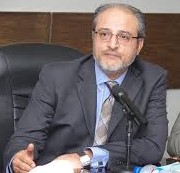Sardar Ejaz Ishaq Khan
On reading the Code of Civil Procedure (Amendment) Act, 2020, passed by the Legislature a few days ago, I recalled one of Mulla Nasruddin’s fables with the Mulla looking for something at night in the street outside his home under an oil-lit street lamp. A friend came by and on asking was told that Mulla had dropped his ring and was now looking for it.
The friend joined in the search. After sometime, the friend asked if the Mulla was sure the ring was dropped where they were looking. Mulla replied that he dropped the ring inside the house. Stunned, the friend asked why was Mulla looking for the ring in the street. Mulla replied: “because there is no light inside the house”. The CPC amendment is a classic instance of looking for faults at the wrong place.
Trumpeted as a landmark product of the legislative ingenuity of the present Government, the CPC amendment has left the legal practitioners bewildered at the sheer divergence of the avowed aims of the amendment and what it actually achieves. Preambled to bring “procedural reforms in order to provide inexpensive and expeditious justice”, the amendment accomplishes quite the opposite. One wonders if there was any meaningful consultation by the sponsors of this amendment with experienced trial lawyers, and if there were any, whether there was a consensus to play a practical joke on the litigants and the Courts.
For starters, the concept of having two sets of pleadings before two separate Courts – one for the main case and the other for the miscellaneous applications (applications for injunctions, attachments, etc.) is ludicrous to the extreme. Now two instead of one Court will have to grasp and master the facts. The parties will have to pay twice the fee to the lawyers to appear in two courts, apart from the added costs of printing and copying and the headache of scheduling.
The provision that the progress in the main case will not be delayed due to the pendency of a miscellaneous application is yet another display of inexcusable ignorance – for example, how could a main case proceed unless an application for discovery of critical evidence was decided by the other Court hearing that application?
Sections 2 and 3 of the Act are only rhetorical and add nothing of substance to the existing provisions of the Code. Section 4 only requires the cases above fifty million to be instituted before the District judge, that will see the much lesser number of District Judges inundated with cases.
Section 6 makes for amusing reading. The Court and its staff will spend as much time counting the number of days from each previous step as attending to the case itself. There are juvenile drafting errors, such as requiring the defendant to file the written statement not later than thirty days from the date of service “to the plaintiff” (when it should have been “the defendant”) and contradicts the succeeding addition in section 7 requiring the defendant to “appear and answer the claim” within fifteen days – is the defendant just expected to trot over to the Court for a refreshing breath of Courtroom air when he is not required to file its reply for another fifteen days?
The Court is now relieved of performing its most insightful function, the recording of evidence. Apart from being the manager of the proceedings on a real-time basis in his Court, a judge in a common law jurisdiction was always expectedto observe the demeanour of the witnesses, as much was meant to be conveyed by the stutter or unease of a lying or unsure witness.
The task of recording of evidence has now been handed over to “Commissions of advocates and retired judges”, who will all charge a fee for this task. One wonders how adding an additional layer of cost for the litigants in the form of fees for the Commissions and the logistics will serve the amendment’s avowed aim of reducing the cost of litigation. The Courts are now meant to give judgments based on the audio/video recordings of evidence and their transcripts alone. What’s more, the Court was empowered under law to rule on the admissibility and other aspects touching the validity and weight of the evidence while it was being recorded, a power that does not vest in the Commissions.
Conventionally, the Commissions were meant to be deployed where recording of evidence was not possible in the normal regime, for example, in case of a sick witness who could not come to the Court. With the amendment in place, the judges can now progress cases in the comforts of their homes, dressed in their night suits, watching the video recordings of the evidence taken by the Commissions and while sipping their morning tea – all without any direct and perceptive interaction with the witnesses and the litigants that was always the foundational basis of a Courtroom trial.
There is now also a perverse reversal of the roles; “spot checks” were entrusted to the Commissions under the old law but will now be carried out by the judges – the judges would now roam about the town for spot checks while the Commissions will sit recording evidence.
The greatest absurdity appears in sub-section 26(C) whereby the High Courts are now meant to redefine the 100 year plus old jurisprudence on evidence, documents, “choosing sides” (what was the drafter thinking here?) and the like, replacing a dynamic, real-time unfolding of the Court trial with a static, prescriptive regime which with all ingenuity and foresight at the command of the human talent cannot cater to the myriad real-time contingencies of a Courtroom trial.
One cannot but resist quipping that by entrusting to the High Court the most daunting task of anticipating and writing all possible contingencies that may arise during a real trial the sponsors of the legislation have taken some deep-rooted revenge on the High Courts; if it doesn’t work in practice, it is obviously the mistake of the High Court for failing to address the possibility. The honourable judges of the High Court have enough on their hands by way of redefining the High Court rules with the aim of introducing a modern and efficient court management system to worry about distilling the Qanun-e-Shahadat Order for reuse by the Commissions.
Section 8 requires the Court to announce judgment within ninety days after hearing the arguments. Such prescriptions of time never work in practice. What if the Court is unable to do so for genuine reasons? Obviously, a judgment announced later than ninety days will not be a nullity. Or will it? If it is, then the litigants will be delighted to hear that they are permitted to relive the fun of the trial all over again, without losing any sweat about expedition and expenses, if there is no judgment on the ninety-first day. But it won’t be so.
The Supreme Court in its celebrated judgment MFMY Industries versus Federation of Pakistan (2015 SCMR 1550)prescribed timeframes for judgments by the District Courts, High Courts and for itself, and one observes with apologetic temerity that the judgment’s time prescriptions are not observed in practice, including by the Supreme Court itself. For the issue lies not with the lack of time prescriptions, but the inordinate quantum of frivolous litigation that the Courts have to deal with on a daily basis.
Section 10 eliminates one layer of appeals against final judgments – from the Civil Court to the District Court. Now all appeals will go direct to the High Court. By eliminating a ‘second appeal’ – the argument goes – the litigation is being made expeditious.There is now no remedy against some orders, which previously could have been challenged in revision.
We can argue ad nauseum whether making the High Court the first appellate court is a salutary measure, but the premise for the proponents lies in treating the right of appeal as a waste of time – why not file the appeal directly before the Supreme Court in that case or eliminate it altogether; it would be more expeditious.
Mulla Nasruddin has now his match in the sponsors of the amendment. Instead of addressing the core issues of false and frivolous litigation, prosecuting false witnesses, increased funding and training of Courts and judges, presenting the Courts with a modern IT-based case management system, and the like, the sponsors are seeking to fix what was not broken, and in the author’s humble view have ended up doing more damage than good.
–The writer is Barrister-at-Law and Advocate Supreme Court



